

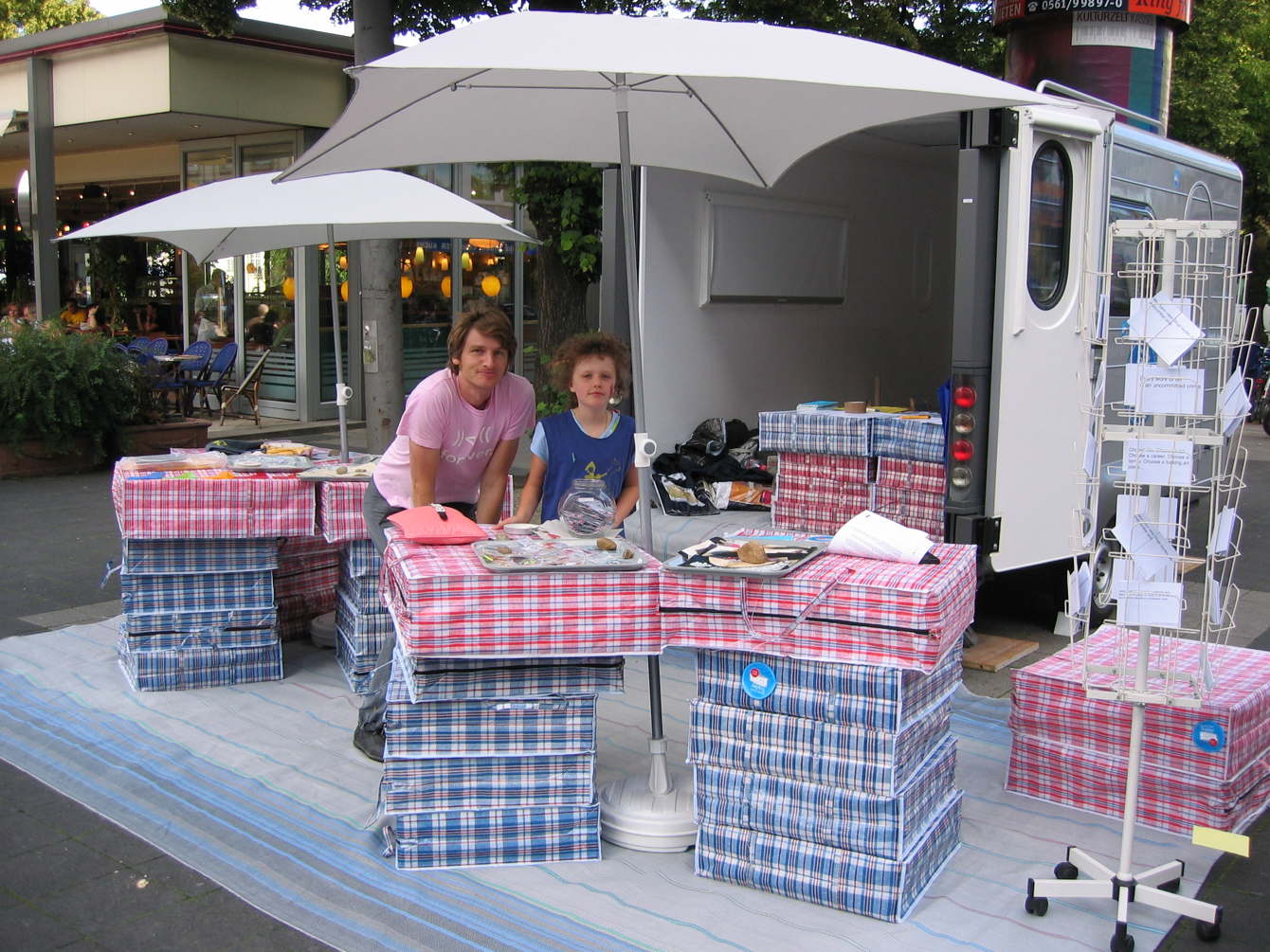

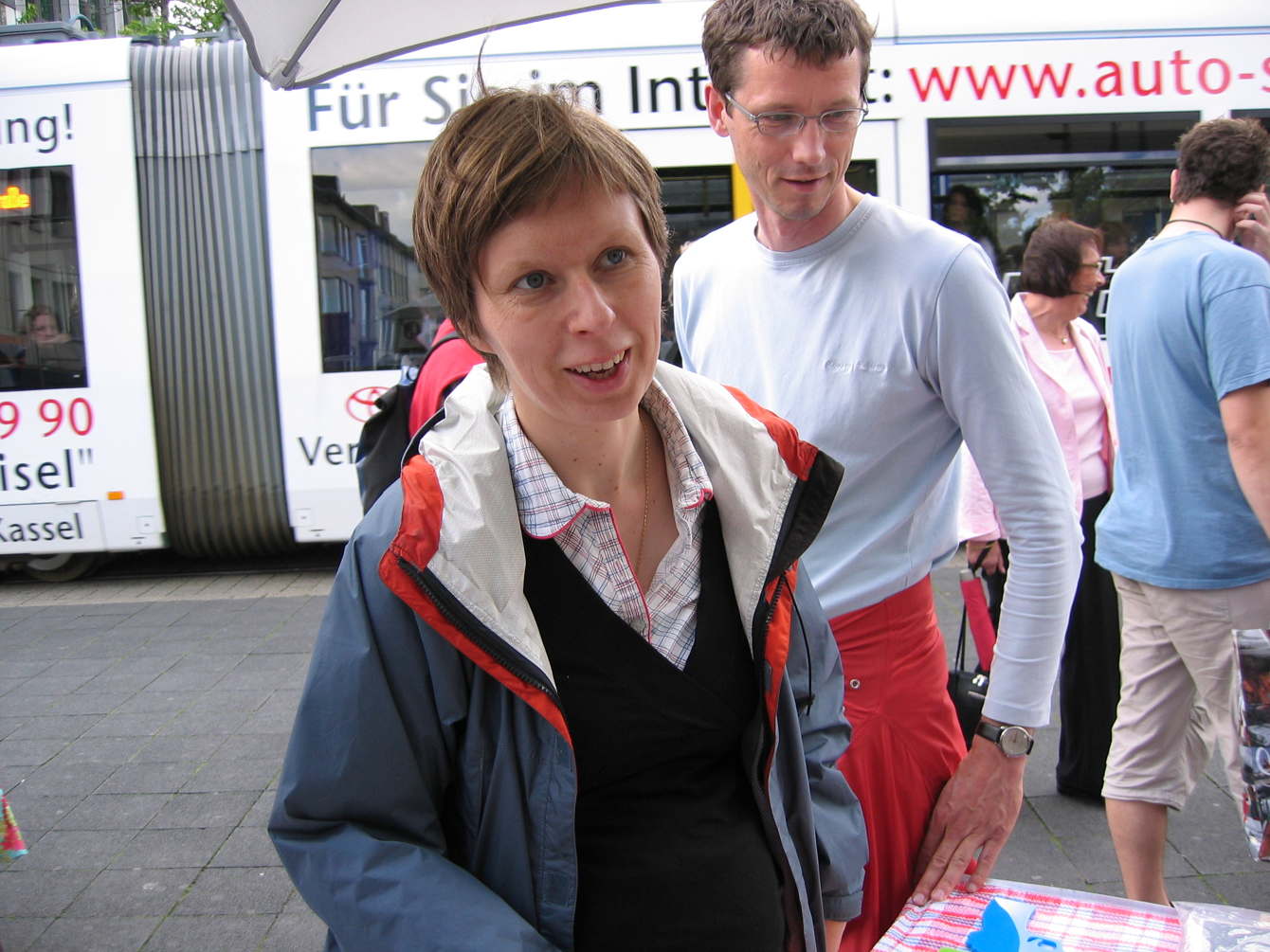


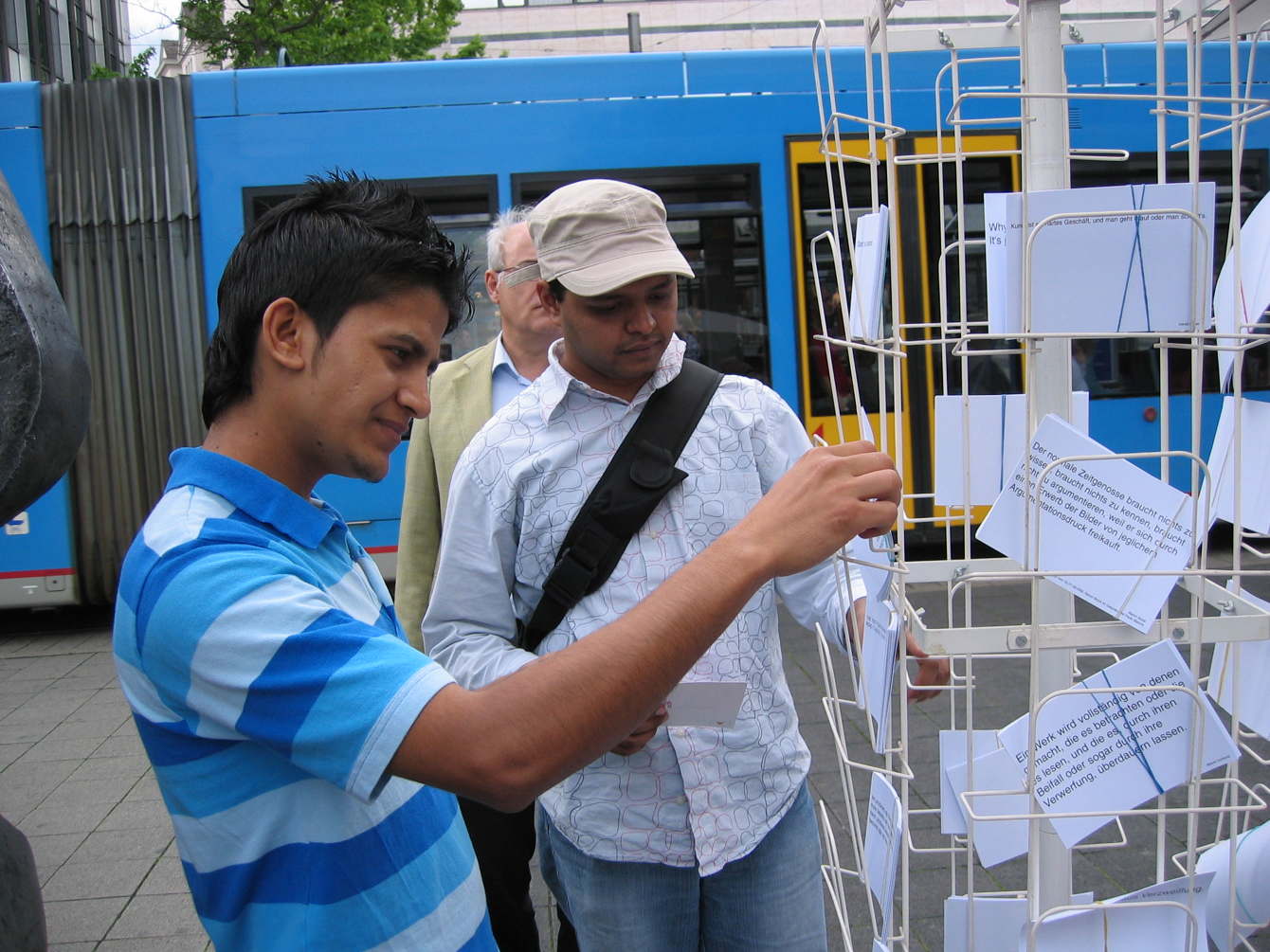
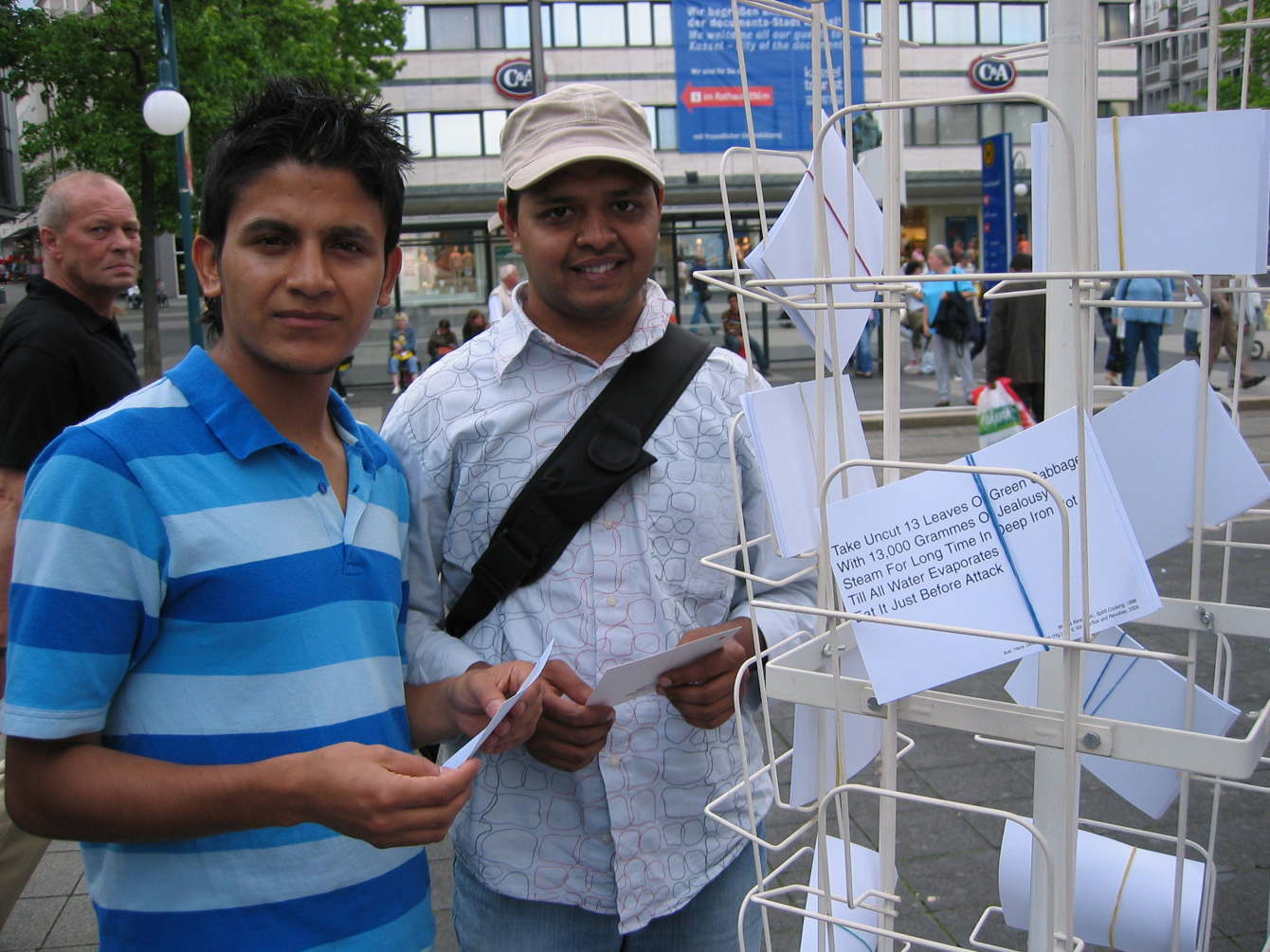

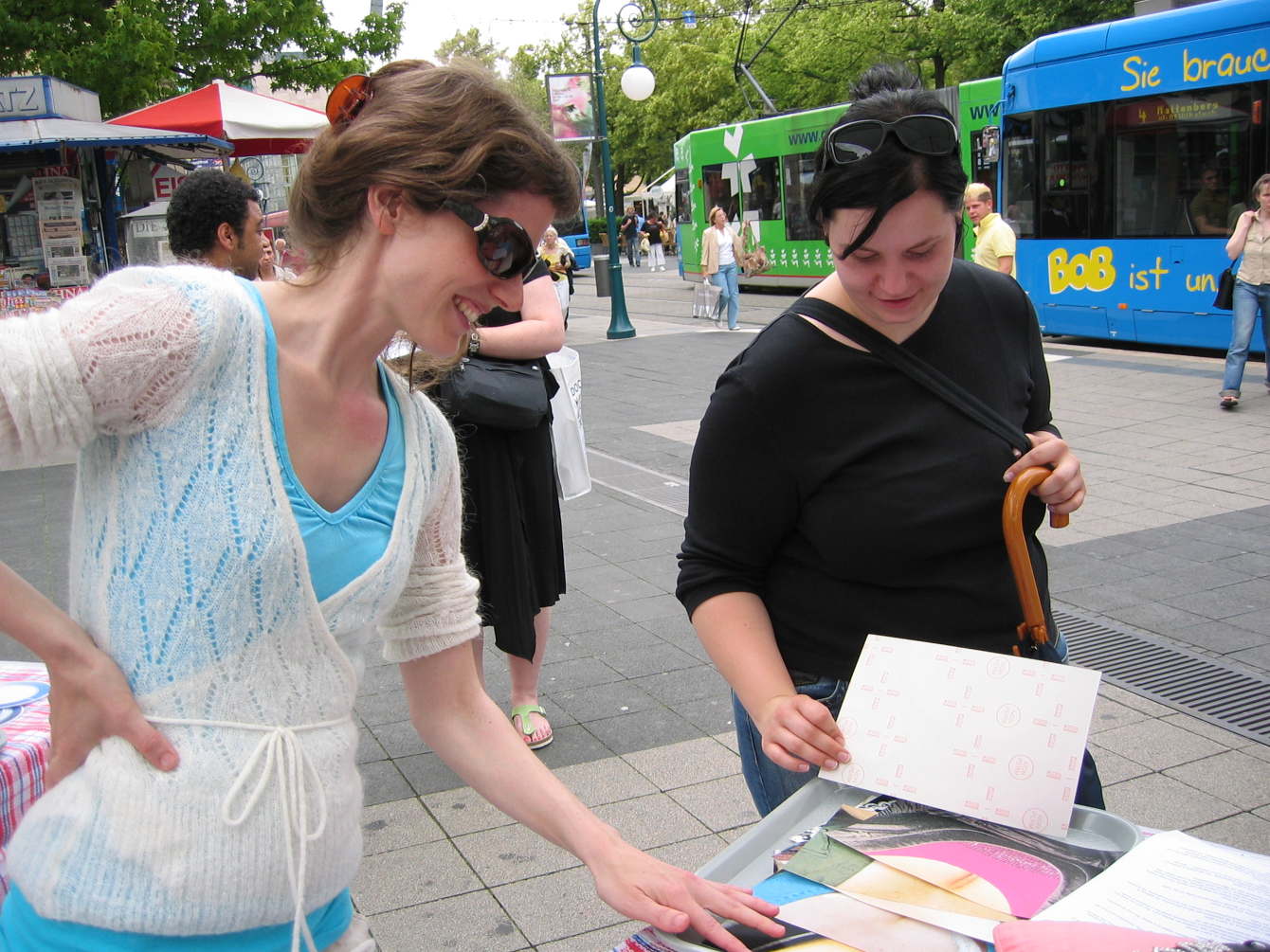
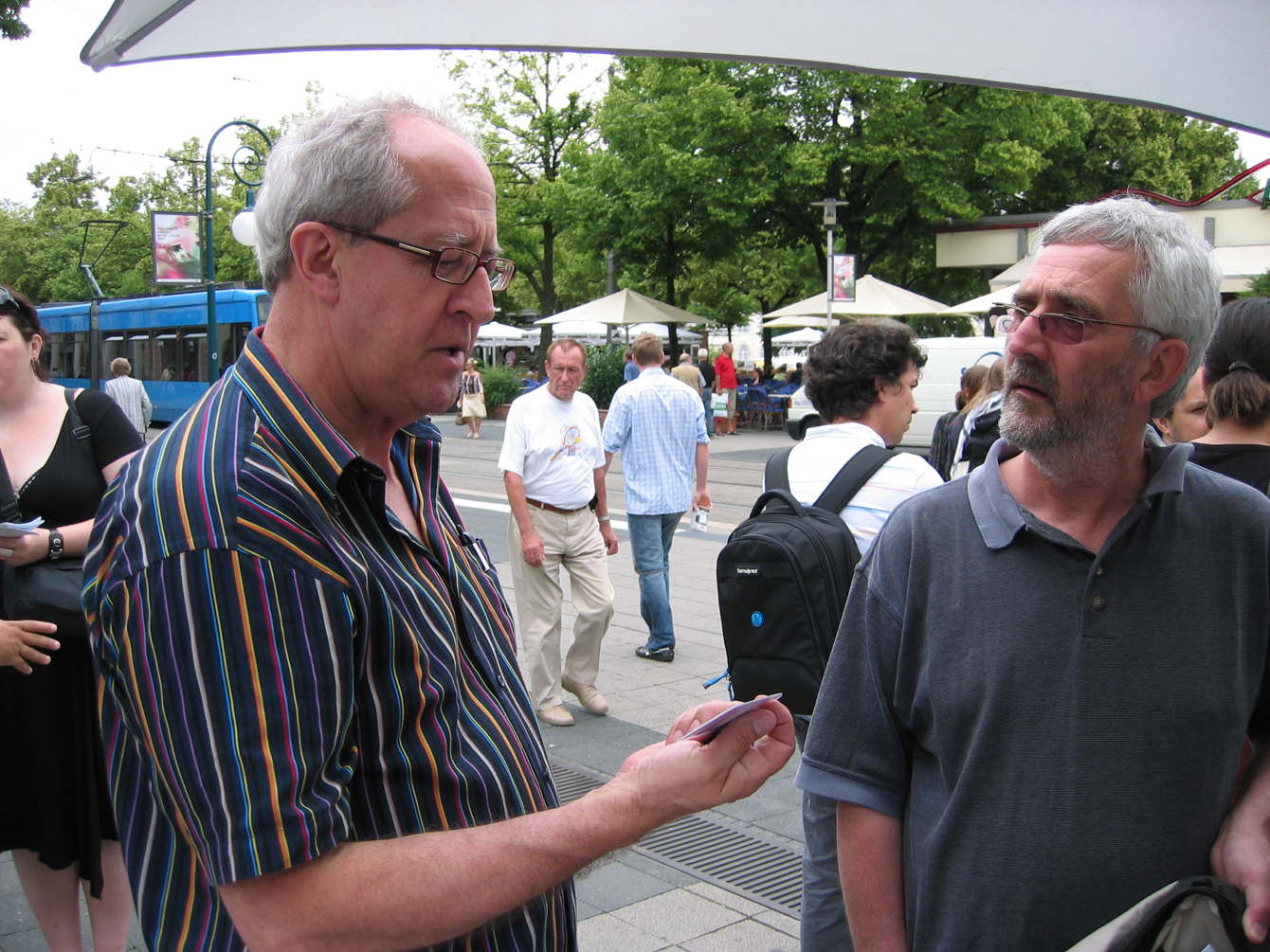
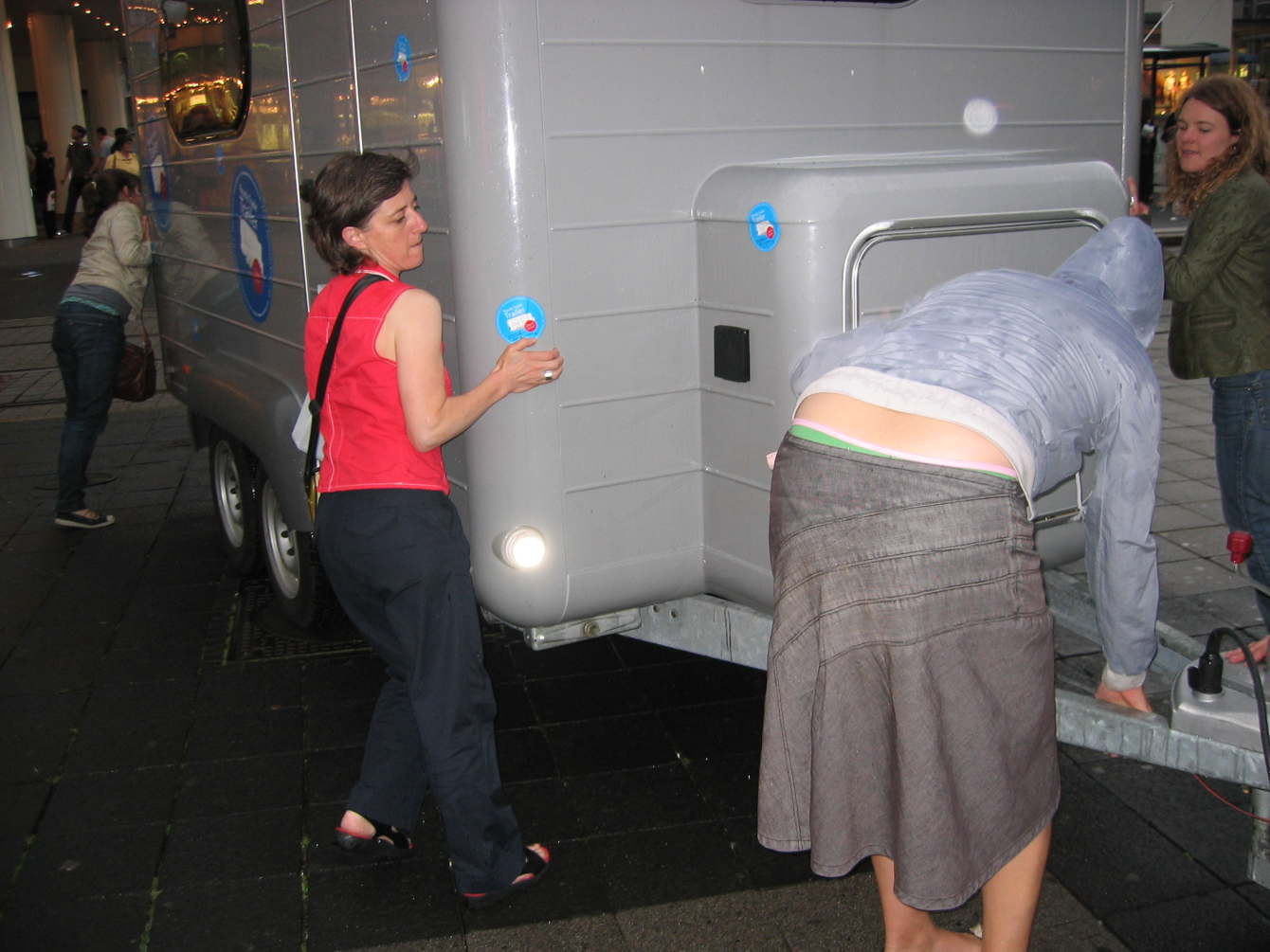
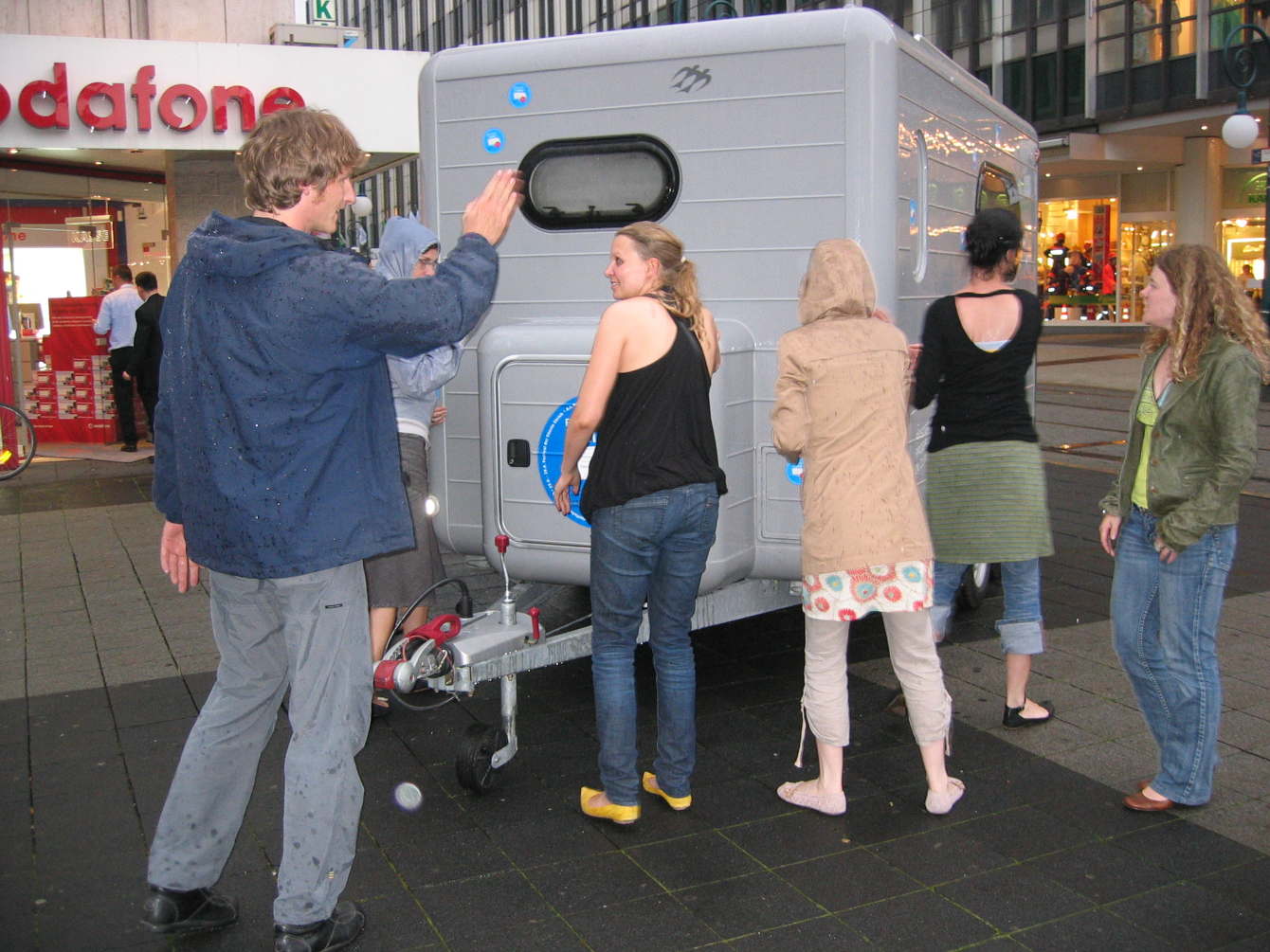
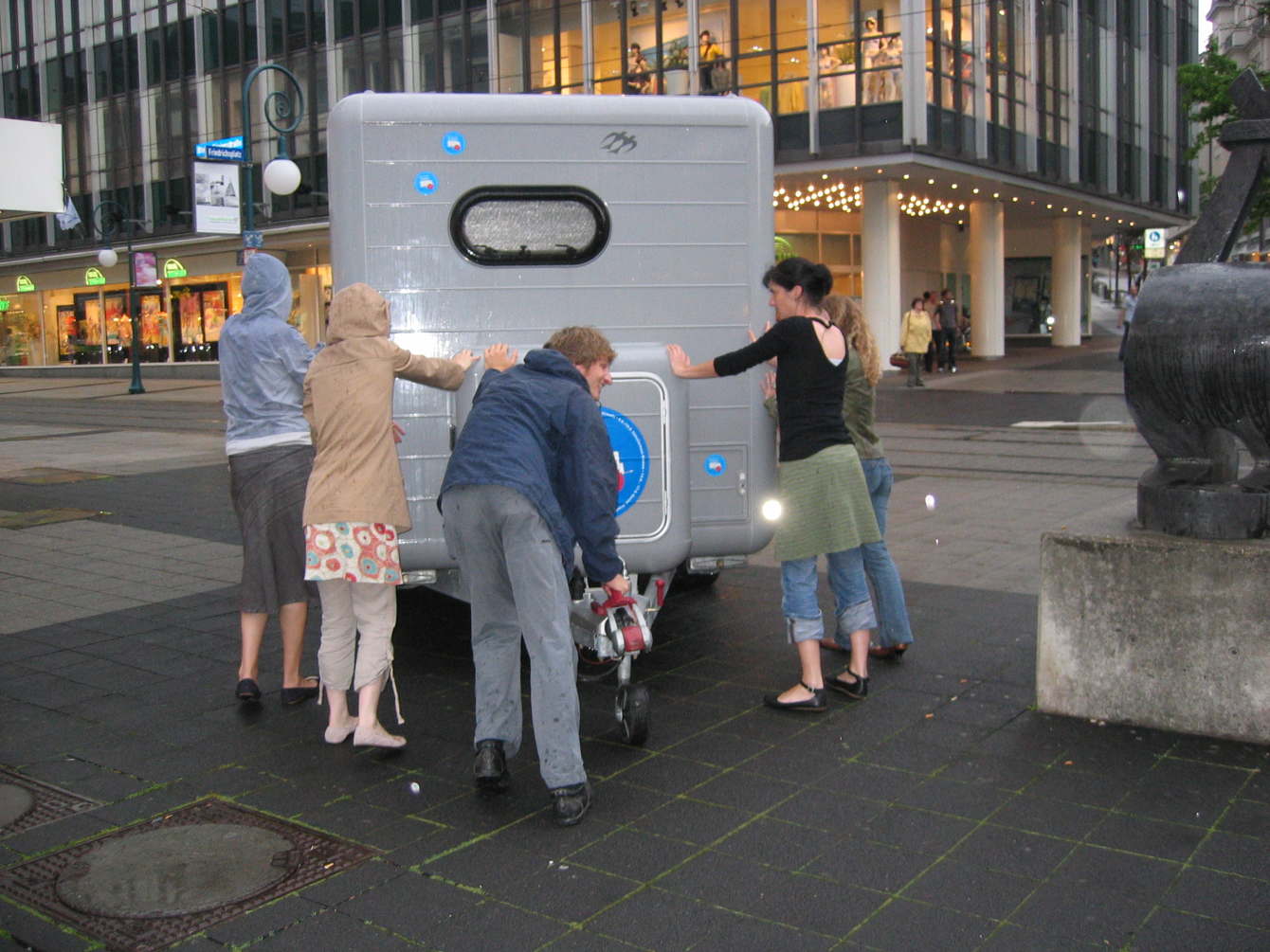
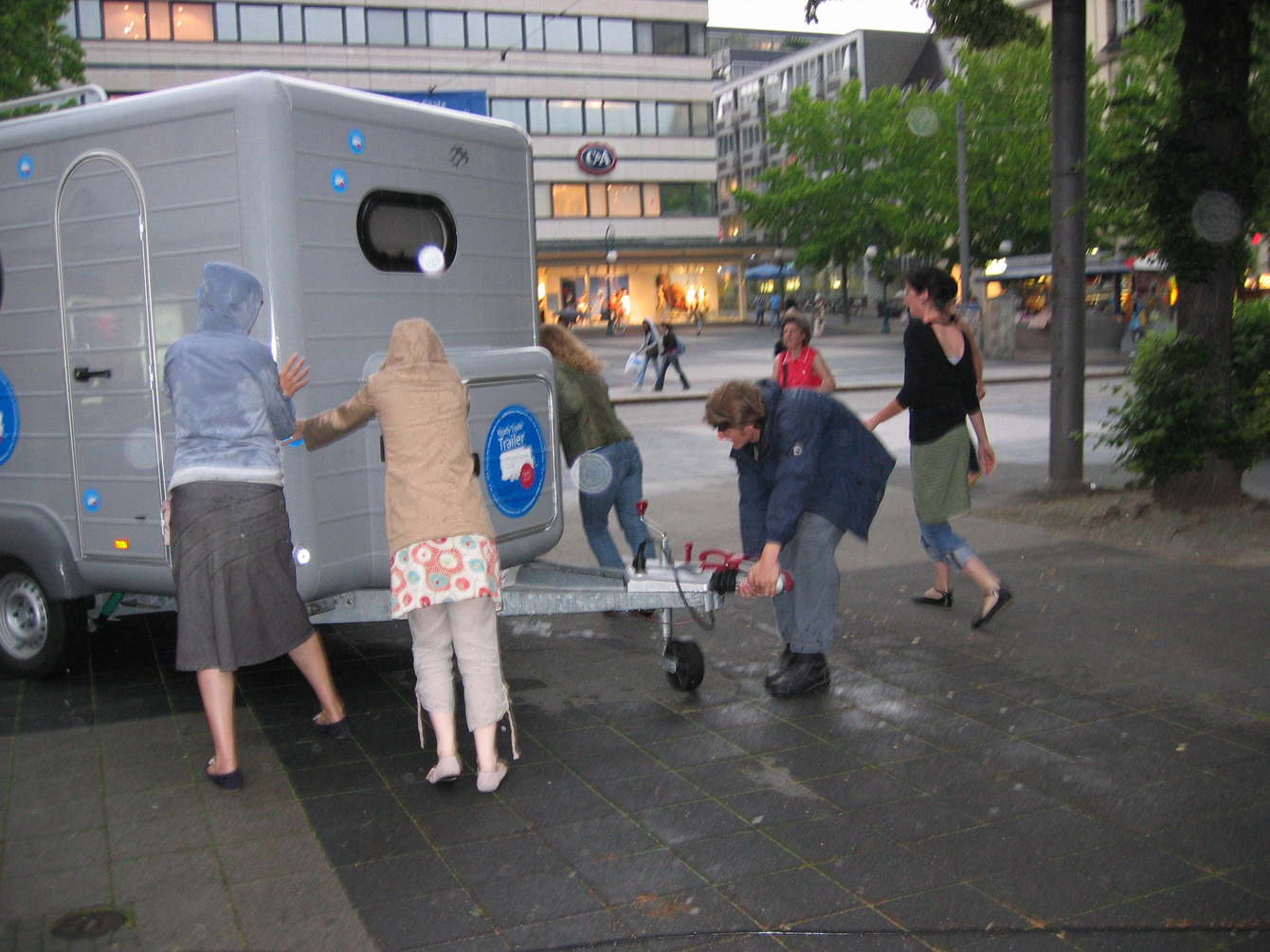
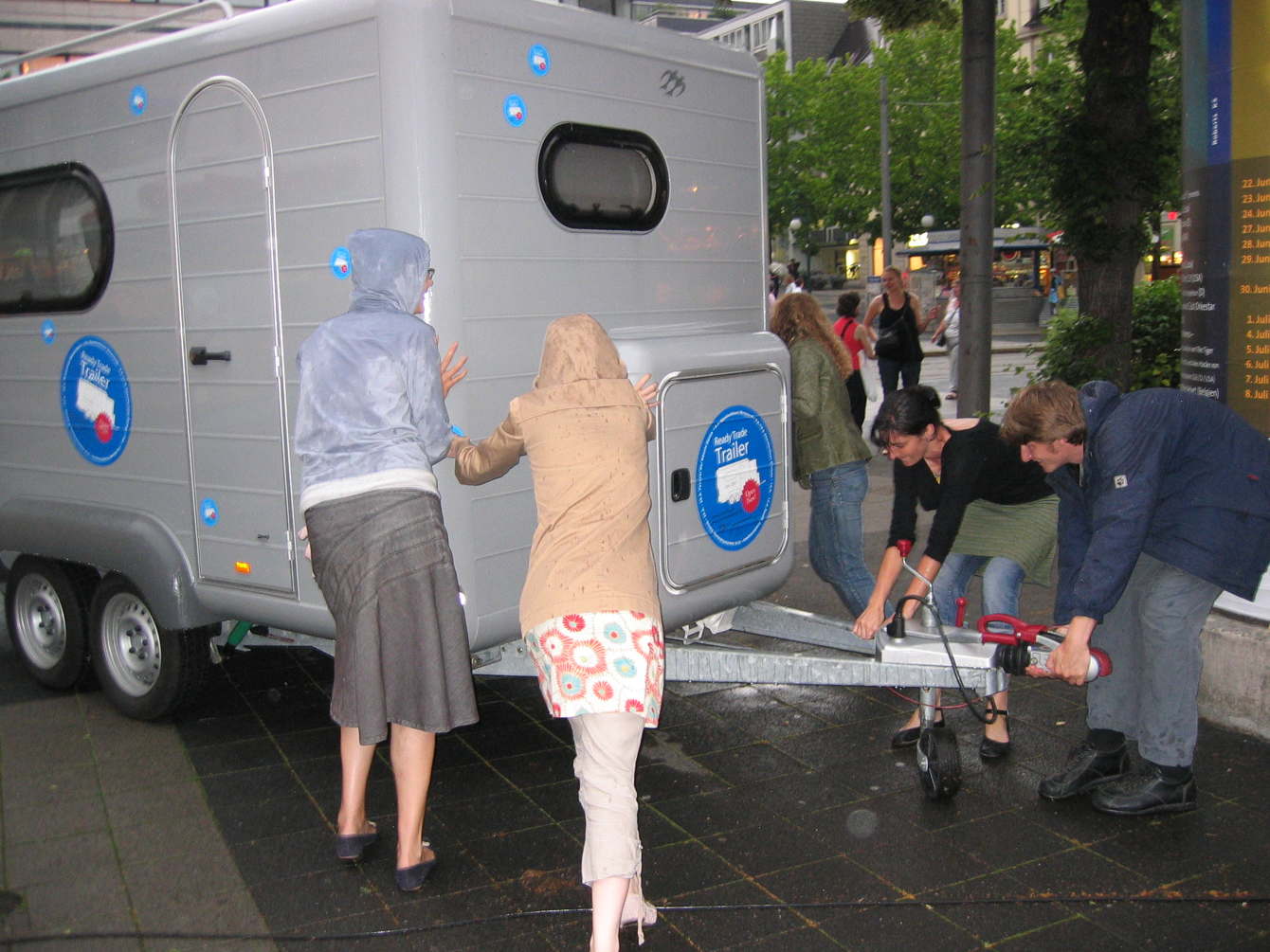

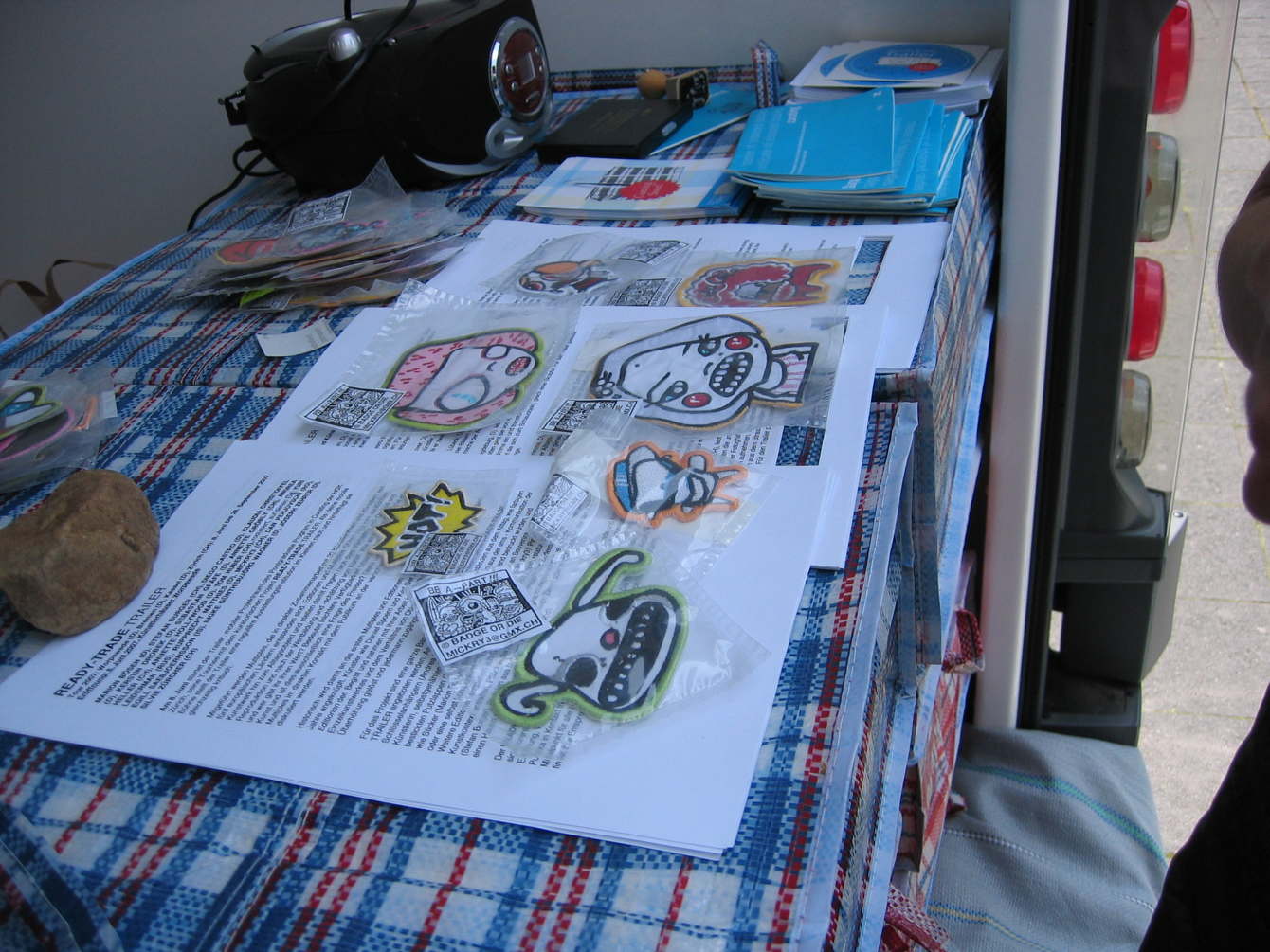
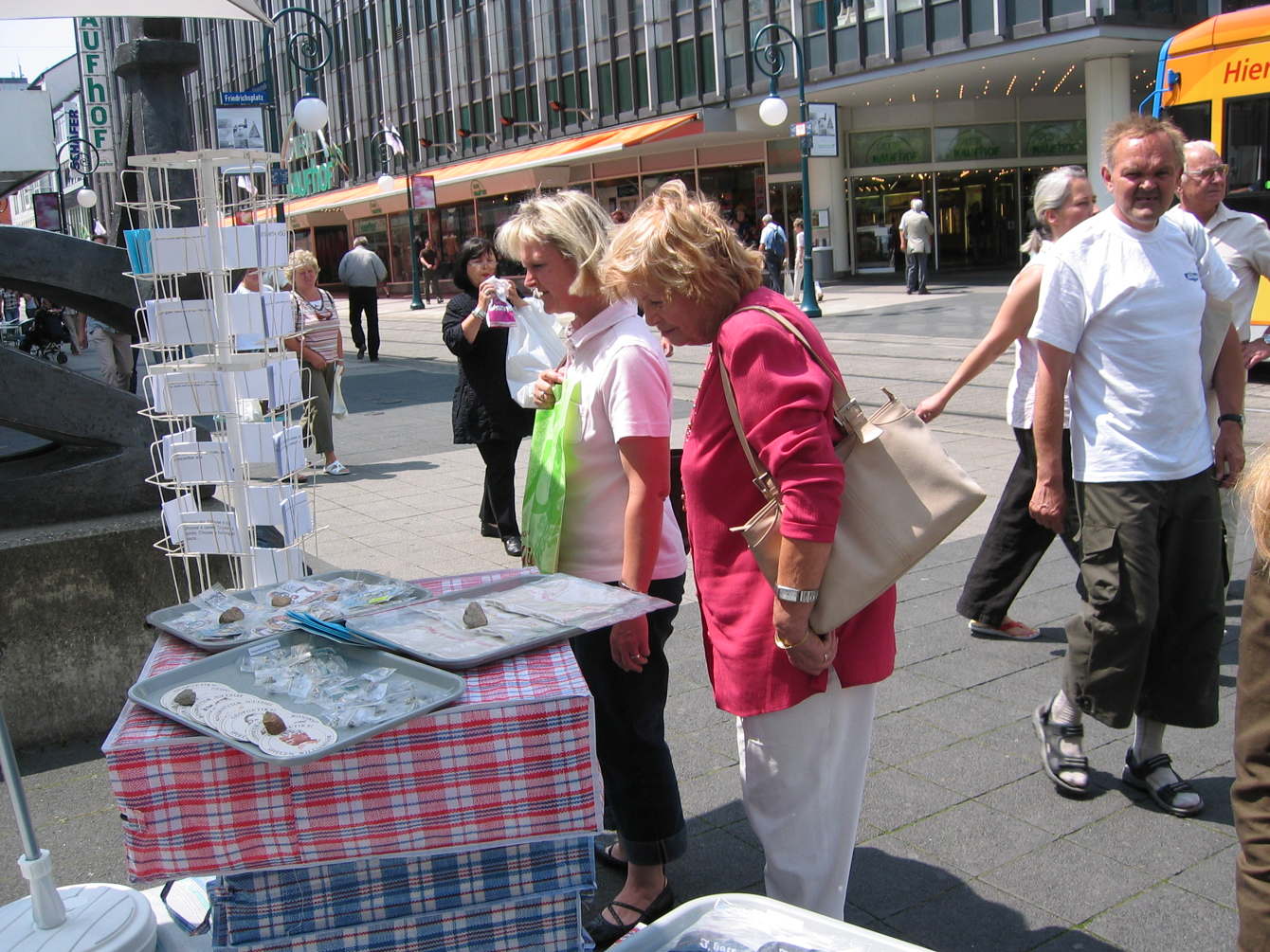


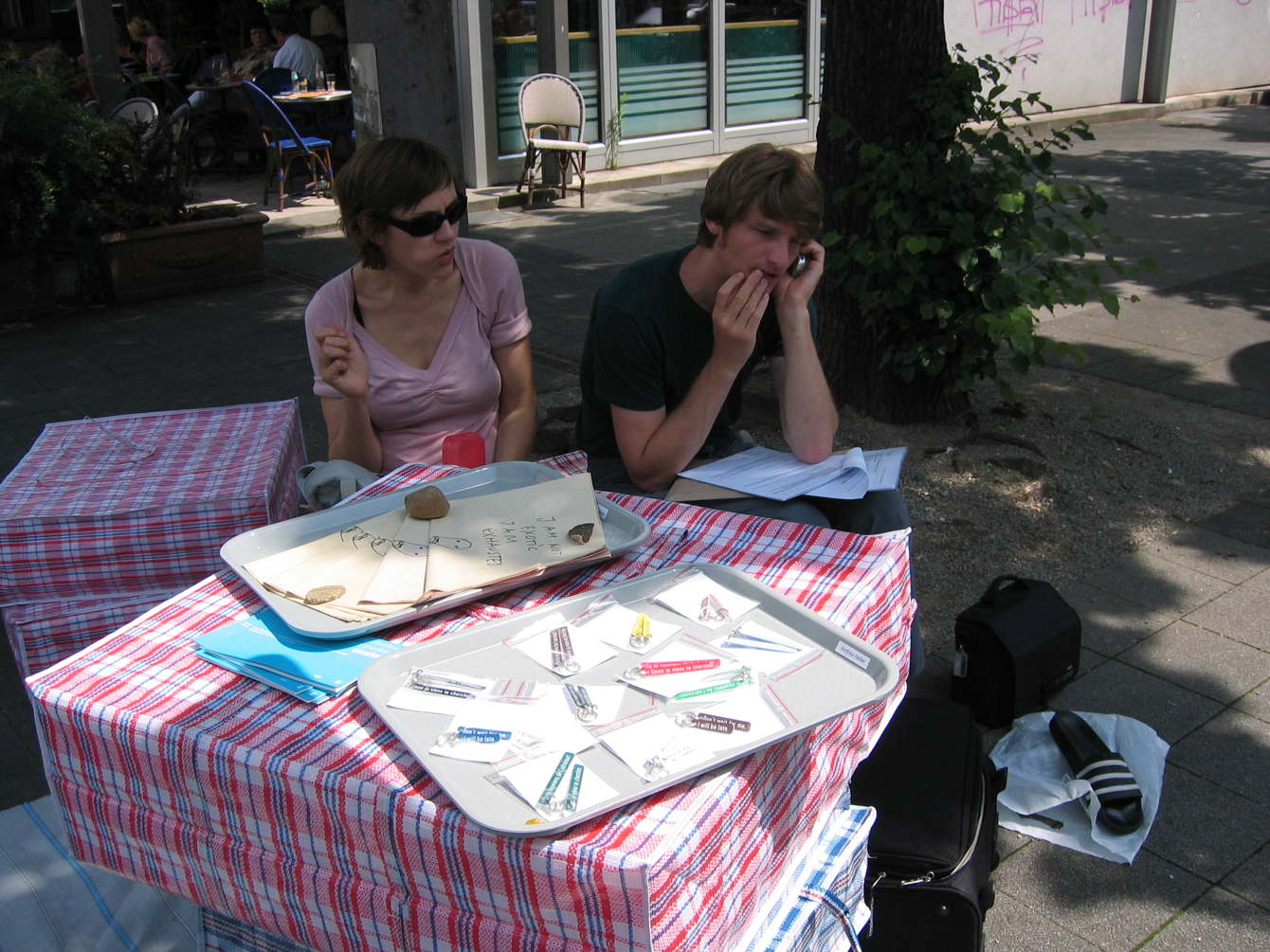
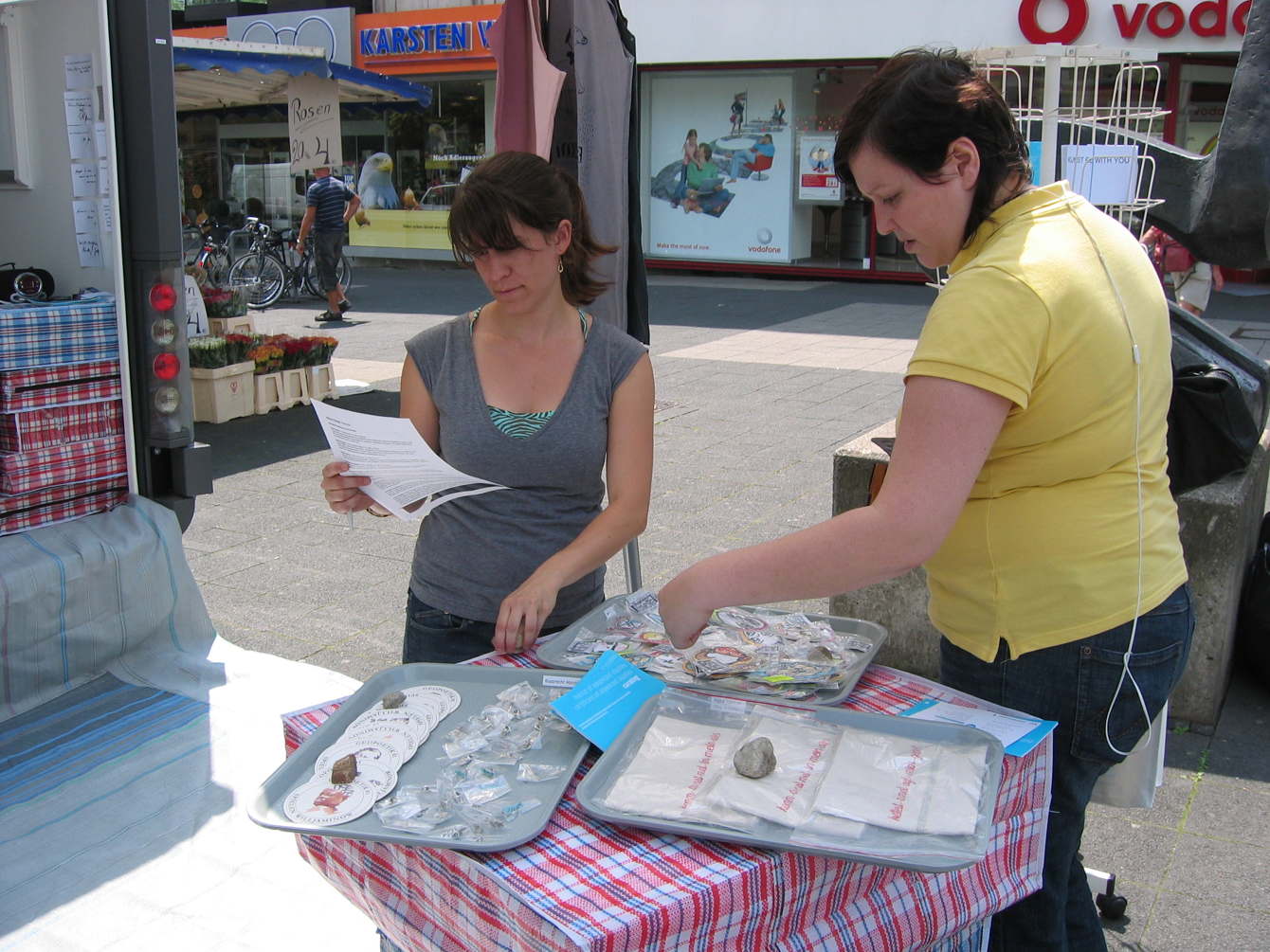
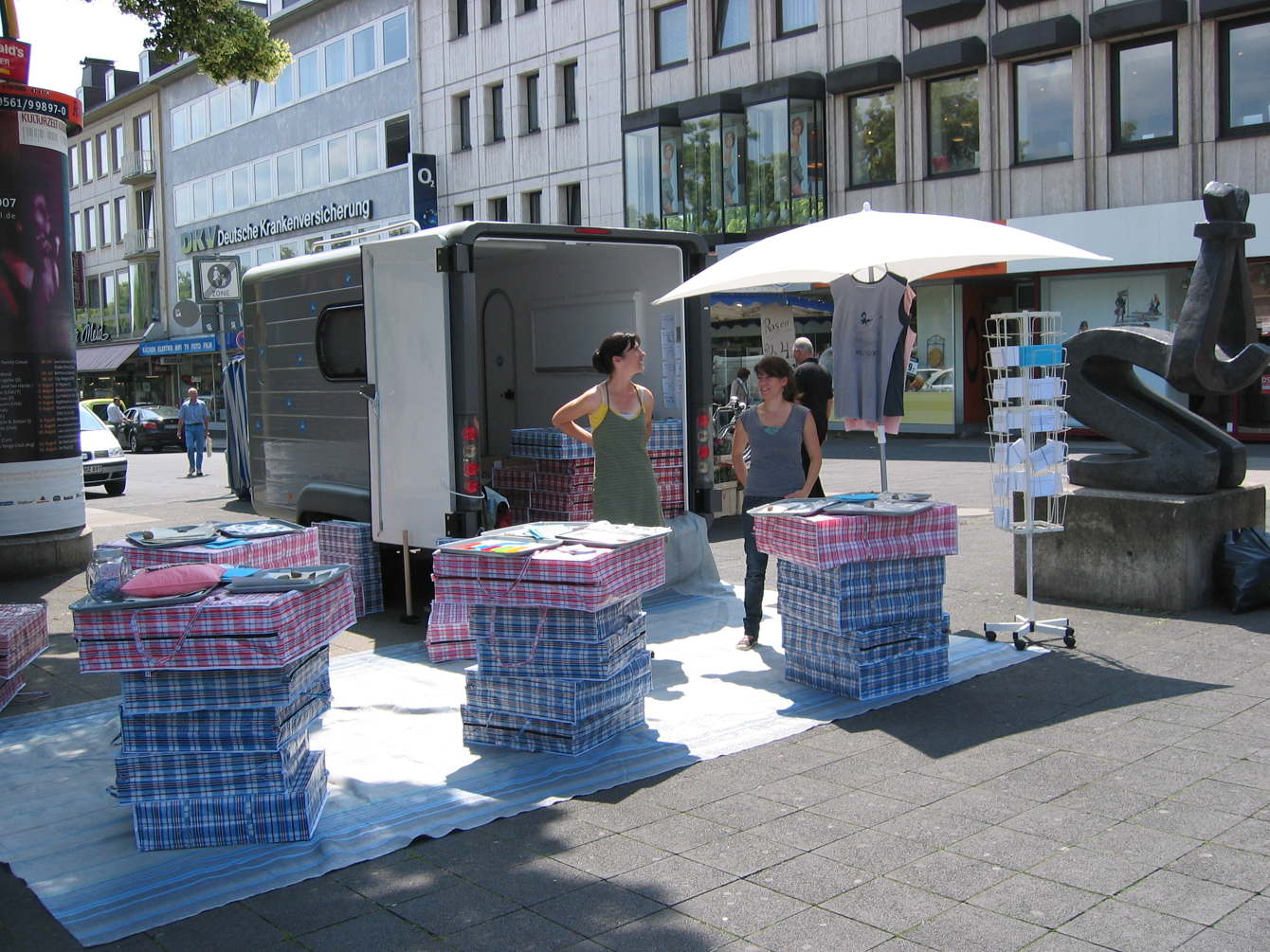
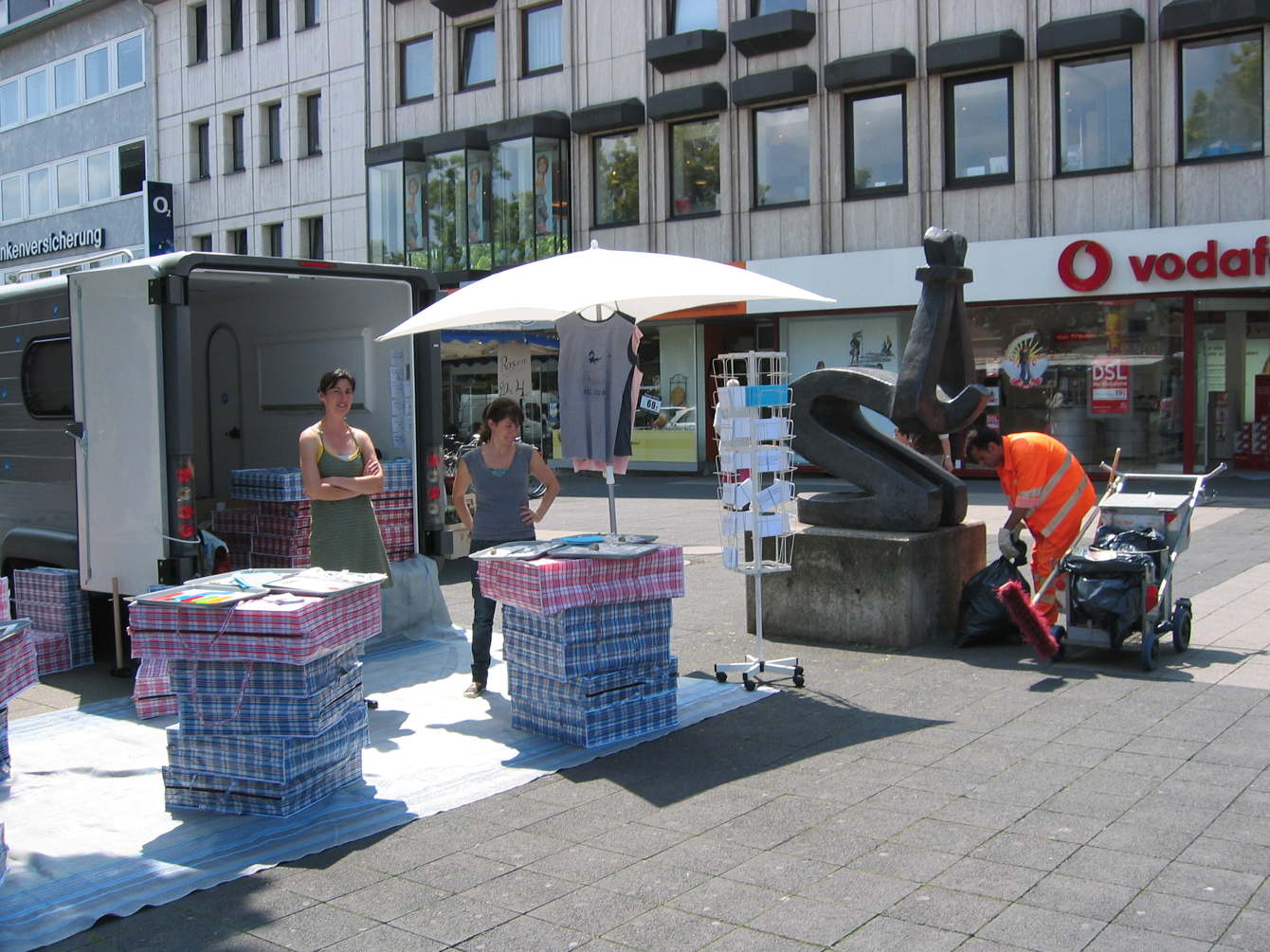


2012
Ready Trade Trailer
Kassel, Koenigstrasse
A mobile projectroom with editions by artists: Katja Bassanini; Marion Bäsen, Stefan Burger, Diego Casto, Annelise Coste, Stefan Demary, Köken Ergun, Annette Hollywood, Tom Huber, D…..K…., Andres Lutz/ Anders Guggisberg, Mickry 3, Dan Perjovschi, Egill Saebjoernsson, Jörg Wagner / Ingke Günther, Joseph Zehrer, Silvie Zürcher.
From the beginning of June to the end of September 2007, the trailer – the mobile project room of the ZHdK’s (Zürich Art Academy’s) postgraduate programme in curating – was on
tour with the curatorial project READY-TRADE TRAILER. As a small, mobile stage, the trailer represents a small-scale version of a regular exhibition institution while at the same time critically questioning that institution.
Tour 2007: Artist residencies Worpswede, Künstlerhaus Bremen and Atelierhaus Güterbahnhof Bremen as well as Friedrichsplatz Square, Kassel; Kanzlei Flea Market, Zürich and Festival der Künste (Festival of Arts), Zürich (CH)
On tour with the trailer were multiples produced in direct cooperation with nineteen artists from five European countries. Editions and multiples depart from the auratic artwork and tend towards the everyday object, thus raising questions about the relationship between the original and the reproduction, the creation of value in and the appreciation of art. The project attempted to provide insight into the transformation from cultural and social capital into economic capital. How is art recognized as such and who awards it its value? Does easier accessibility really amount to the democratization of art and is this accessibility/ democratization solely a question of price? Taking the multiples as a point of departure, these and other questions were to be considered and discussed with the public indifferent locations.
Emancipatory Education – Emancipatory Forms of Mediation?
In the contemplation of contemporary exhibitions, one arrives at the rather devastating conclusion that nothing has really changed: art is still being staged for a white (male) Western
public and the artist’s position is thought of as that of the individual (male) artist-genius. Is there, despite this circumstance, an emancipatory means of exhibition?
To begin with, let us consider the proposals put forward by Oliver Marchart, who suggests the following possibilities: 1. interruption, 2. counter-canonization. The interruption aims to examine naturalization effects of the exhibition format and the institution. In other words, it formulates an institutional critique. The counter-canonization would use the defining power of exhibition institutions chiefly in order to expand their canon with regard to content.
From my point of view, however, such an expansion or reinterpretation can only succeed if it is accompanied by a change in the formal parameters. Thus, of the proposed “methods”, all that remains is the interruption, since in the traditional setting the “invocation” of the subjects by an exhibition presupposes the latter as inactive, consuming subjects.